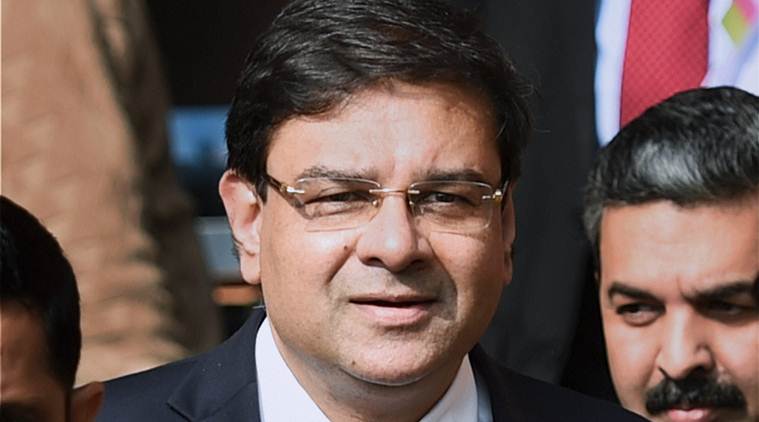RBI cuts growth rate to 6.7%, cautions against fiscal stimulus
RBI Governor Urjit Patel said with the combined fiscal deficit of the Centre and state governments in the region of over 6 per cent of the GDP, the “national fiscal stance can hardly be described as tight”.
 “We should be very cautious lest fiscal actions undercut macroeconomic stability,” RBI Governor Urjit Patel said. (File photo)
“We should be very cautious lest fiscal actions undercut macroeconomic stability,” RBI Governor Urjit Patel said. (File photo)
The Reserve Bank of India (RBI) Wednesday sharply scaled down India’s growth estimates by 60 basis points to 6.7 per cent from 7.3 per cent for 2017-18 and cautioned the government on a fiscal stimulus saying that such fiscal actions undercut macroeconomic stability.
RBI Governor Urjit Patel, while unveiling the bi-monthly monetary policy statement in which the central bank kept its key policy rate, the repo rate, unchanged at 6 per cent, said with the combined fiscal deficit of the Centre and state governments in the region of over 6 per cent of the GDP, the “national fiscal stance can hardly be described as tight”. “In other words, we should be very cautious lest fiscal actions undercut macroeconomic stability,” Patel said, responding to a question on the impact of a fiscal stimulus on the economy.
While five members of the six-member Monetary Policy Committee (MPC), including Governor Patel and Deputy Governor Viral Acharya, voted in favour of keeping the repo rate steady, one member, Ravindra H Dholakia, wanted a 25 basis points cut in the repo rate to 5.75 per cent. However, the RBI slashed the statutory liquidity ratio (SLR) — the portion of deposits to be invested in government securities — by 50 basis points to 19.50 per cent.
Patel said farm loan waivers and implementation by states of the salary and allowances award could push up headline inflation by about 100 basis points (one percentage point) above the baseline over 18-24 months, a statistical effect that could have potential second-round effects. Patel’s warning has come amid reports that the central government is planning to come out with a fiscal stimulus package of around Rs 40,000-50,000 crore to revive the sagging economic growth.
On growth projections, the RBI said the loss of momentum in the first quarter of 2017-18 and the first advance estimates of kharif foodgrain production are early setbacks that impart a downside to the outlook. “The implementation of the GST so far also appears to have had an adverse impact, rendering prospects for the manufacturing sector uncertain in the short term. This may further delay the revival of investment activity, which is already hampered by stressed balance sheets of banks and corporates,” the central bank cautioned.
Taking into account these factors, the RBI said it is revising downward the projection of real GVA (gross value added) growth for 2017-18 to 6.7 per cent from the August 2017 projection of 7.3 per cent, with risks evenly balanced. Several experts, including former Finance Ministers Yashwant Sinha and P Chidambaram, had recently expressed concern over the slide in the GDP growth to a 13-quarter low of 5.7 per cent in the first quarter of fiscal 2018.
“This revision takes into account the slump in growth estimated by the Central Statistical Office (CSO),” the RBI said. However, it clarified that the projection of growth of 6.7 per cent for the year 2017-18 as a whole is consistent with an acceleration in the second half to 7.1 per cent in the third quarter and 7.7 per cent in fourth quarter. “The RBI’s surveys point to robust consumer confidence and buoyant business expectations for the third quarter of 2017-18,” the central bank said.
The MPC said real GVA growth slowed significantly in the first quarter of 2017-18, cushioned partly by the extensive front-loading of expenditure by the central government. “GVA growth in agriculture and allied activities slackened quarter-on-quarter in the usual first quarter moderation, partly reflecting deceleration in the growth of livestock products, forestry and fisheries. Industrial sector GVA growth fell sequentially as well as on a year-on-year basis. The manufacturing sector, the dominant component of industrial GVA, grew by 1.2 per cent, the lowest in the last 20 quarters,” it said.
The RBI also cautioned against a pick-up in inflation. “Inflation is expected to rise from its current level and range between 4.2-4.6 per cent in the second half of this year, including the house rent allowance by the Centre,” the RBI said.
The MPC observed that CPI inflation has risen by around two percentage points since its last meeting in the first week of August 2017. “These price pressures have coincided with an escalation of global geo-political uncertainty and heightened volatility in financial markets due to the US Fed’s plans of balance sheet unwinding and the risk of normalisation by the European Central Bank. Such juxtaposition of risks to inflation needs to be carefully managed,” it said.
Although the domestic food price outlook remains largely stable, generalised momentum is building in prices of items excluding food, especially emanating from crude oil. “The possibility of fiscal slippages may add to this momentum in the future,” it warned.
In a statement later in the day, the Ministry of Finance said, “We have noted that this decision has been made by the MPC in the light of the underlying analysis which implies: a downward revision of the real GVA growth forecast for 2017-18 from 7.3 per cent to 6.7 per cent, which leads to a widening of the output gap; and a marginally upward revision of the CPI inflation forecast for the second half of the year meaning an average inflation for the year 2017-18 as a whole of less than 4 per cent.”
Chanda Kochhar, MD and CEO, ICICI Bank, said the RBI’s announcement to keep the policy rate unchanged was on expected lines. “The MPC has not viewed the recent growth slowdown as being structural in nature and is expecting it to be transient with growth prospects likely to improve over the medium term. By retaining the focus on inflation targets, this policy ensures that the confidence of the investors on the Indian macro-economic indicators will continue. Further policy action will be contingent on the evolution of the output gap and its impact on the inflation trajectory,” she said.
India Inc expressed disappointment over the status quo on the interest rate front at a time when economic growth is facing turbulent times. FICCI president Pankaj Patel said: “In the context of the current industrial situation, we felt that there was need for a further cut in the repo rate. Growth conditions remain under strain which is reflected in the persistently weak investment activity and the first quarter GDP growth numbers. While Reserve Bank of India in the policy statement cites inflationary pressures to remain a concern, FICCI feels that we need to give equal consideration to growth prospects. At this juncture, we need a feel-good factor in the economy that would motivate people to spend and buy more.”
Photos



- 01
- 02
- 03
- 04
- 05




























